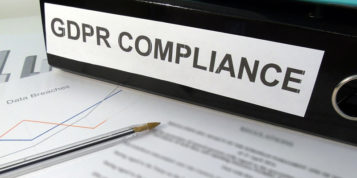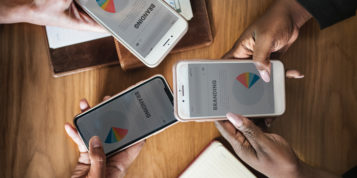The noise generated by the digital industry around GDPR may have died down since 25th May, but a stark reality remains – those looking to implement digital advertising campaigns face significant challenges.
Firstly, confusion still reigns about what constitutes compliance, importantly on the issue of consent – are stringent opt-ins required? And what’s GDPR’s definition of legitimate interest? It’s confusion that’s worrying marketers who are backing away from using some of the traditional digital marketing routes that require the use of consumer data.
Secondly, many databases, ad platforms and exchanges are still in the process of becoming compliant after the deadline, which has impacted on the amount of online ad inventory available. Even Google’s DoubleClick ad exchange experienced some short-term disruption caused by the regulations. Some US publishers, such as the Los Angeles Times and Chicago Tribune have shut down their European sites and others have halted programmatic ads on their European sites or reduced the amount of inventory available.
As a result of these factors, demand for online advertising inventory has fallen. This has been highlighted by recent statistics. Since the advent of GDPR on 25th May ad exchanges have seen European ad demand fall between 25 per cent and 40 per cent.
None of this confusion over GDPR and the new challenges it creates is good for digital advertisers, especially in the current economic climate.
Reducing advertising spend in response to GDPR is not an option, because within a competitive market doing so can have serious detrimental effects, negatively impacting on awareness and sales.
What’s the answer for digital marketers?
Digital advertisers need to explore alternative media channels where the impact of GDPR is less prevalent, and where the data required is already anonymised and GDPR compliant – such as digital OOH (DOOH).
The fast-evolving OOH market is opening up exciting new opportunities for advertisers, particularly through the growth of digital screens.
Digital marketers are best placed to take advantage of some of the new functionality offered within digital OOH including:
- Live social media feeds – where a person can change the content on a screen by messaging through a social media channel
- High fidelity day part targeting – eliminating wastage and offering advertisers the ability to target commuters during core times of day. For example, offering a restaurant the ability to run a different creative for breakfast, lunch and dinner on the same digital screen
- Full motion creative and audio – allowing advertisers to run music with film trailer creative in environments like shopping centres
- Geo-targeting for moving media – targeting creative messages to specific parts of a town or city via digital taxi screens
Importantly, for those digital marketers who are GDPR compliant and have anonymised consumer data, they can also use this within OOH to identify locations that index highly for people interested in a product. This enables them to deliver highly targeted campaigns, by purchasing screens in areas where there are people interested in and more likely to buy their product.
OOH drives online activity
A number of marketers may find it difficult to move from online to OOH – primarily because they are currently operating within a channel that’s delivering linear ROI and where they are able to justify a return for every pound spent.
The good news here is that this doesn’t change. Nielsen carried out research in the USA in 2017 that reveals that OOH is the most effective at driving online activity. It highlighted OOH delivers more online activity per ad dollar spent compared to TV, radio and print.
It found online activations, including search, Facebook, Twitter and Instagram activity generated by OOH indexes at about four times the expected rate given its relative ad spend.
Nearly five in 10 US adults (46 per cent) have used Google, Bing, Yahoo, or another Internet search engine to look up information after seeing or hearing something advertised on a billboard, bus shelter, or other OOH format in the past six months. Also, nearly 40 per cent have visited a Facebook page or posted a message on Facebook after seeing an OOH ad.
Barriers removed
Today, it’s easier than ever to plan and buy OOH campaigns. The advent of automated online trading platforms in this sector has significantly lowered the threshold to entry and swept away the old barriers to access. They are making the planning and buying process an easy, fast, efficient and transparent process.
OOH campaigns aren’t costly. Digital billboards cost from £150 per month dependent on the location and number of times the creative is broadcast, and lead times are not as long as you would think, because the creative is sent directly to the digital screens. Even traditional OOH offers a cost effective opportunity – you can buy a large roadside billboard (48 Sheet) for £600 per month.





